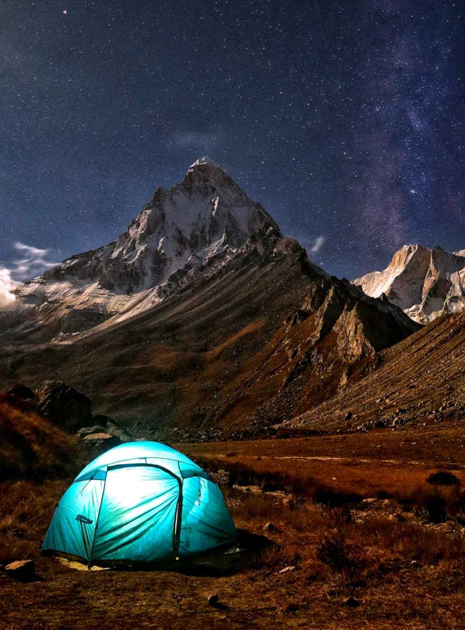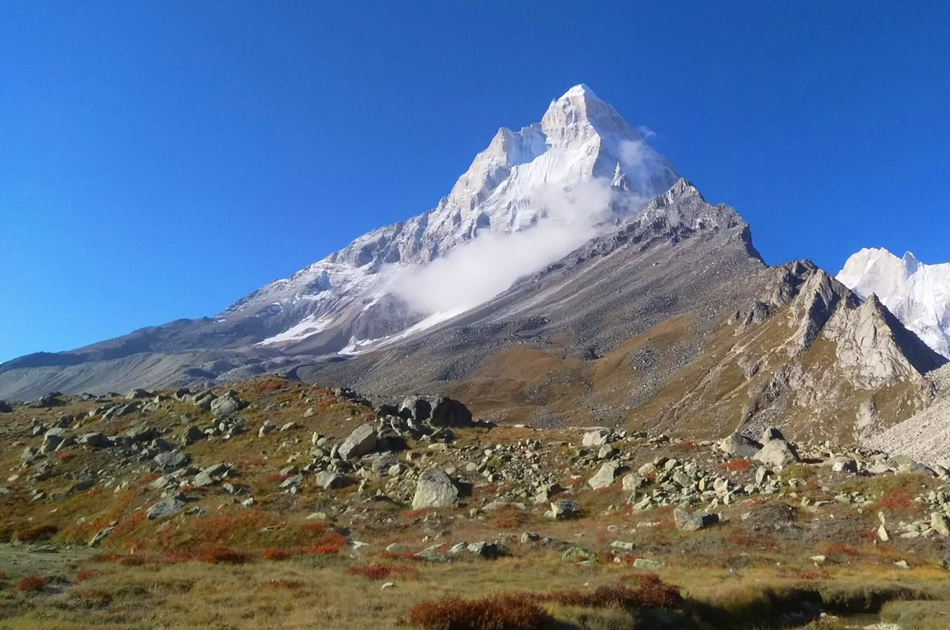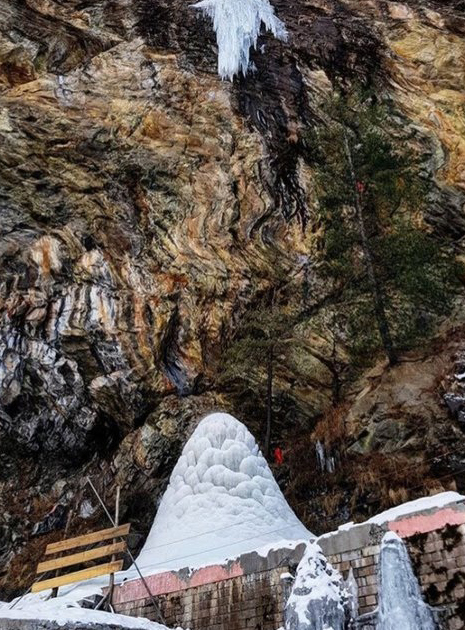Since the conditions on high-altitude are unpredictable, there is a constant readjustment of plans to adapt to the situation at the time. Providing fixed day-wise schedules is hence tricky. But roughly, the schedule includes rotation rounds between camps which is a standard acclimatization process on high-altitude expeditions. Between Base Camp and Summit, we have 4 camps on Mt. Shivling: Advanced Base Camp (4,700M), Camp 1 (5,300M), Camp 2 (5,850M) and Summit Camp.
Given that high-altitude climbs demand a rigorous acclimatization routine, expeditions usually employ the method of making rotation rounds between camps so as to better adapt to the environment. Living the tenet of ‘climb high, sleep low’ which is a golden rule for survival in that altitude, we make multiple rounds between campsites. For Mt. Shivling, specifically, we make two rounds. The first is when we ferry our load up to the next camp, leave our stuff there and then climb back down to the lower campsite to spend the night.
The next day, we climb back up to the camp where we left our stuff and proceed to pitch our tents to now occupy the campsite. What this achieves is a three-fold benefit. Firstly, you can divide your weight between two days so as not to carry a massive amount in one trip. Secondly, it introduces the body to a higher altitude environment but gives it time to better adapt to it by not pushing it in this new height. Thirdly, for each time that you climb the same route, it tends to get easier and easier, refining your technique, skill and adaptation.
After load ferry rotations between camps and occupying Summit Camp on Day 13, we will make our first summit attempt on Day 14. By Day 15, we aim to descend back down to Base Camp and after a day’s rest at base camp, further down to Bhojwasa by day 17 with an aim to depart from Gangotri by Day 18.





